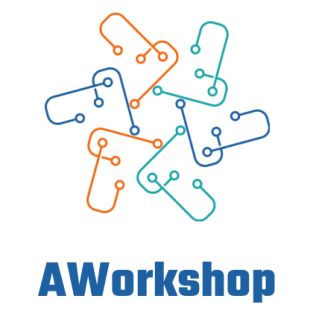Introduction to Niantic’s Lightship AR SDK
In the rapidly evolving realm of augmented reality (AR), few companies have made as significant an impact as Niantic. Renowned for their groundbreaking work with Pokémon GO, Niantic has consistently pushed the boundaries of AR technology. The recent updates to their Lightship AR SDK not only enhance the capabilities of developers but also open new horizons for applications in various industries.
What is the Lightship AR SDK?
The Lightship AR SDK is Niantic’s development platform designed to empower creators to build immersive AR experiences. Launched in 2021, it provides developers with the tools needed to integrate AR functionalities into their applications seamlessly. The SDK supports various features such as:
- Real-Time Mapping: Accurate spatial mapping that allows virtual objects to interact naturally with the real world.
- Multiplayer Capabilities: Enhanced social interactions by enabling multiple users to experience AR together.
- Environment Understanding: Recognizing and adapting to different surfaces, lighting, and contexts.
Recent Updates and Features
1. Enhanced Environmental Understanding
The latest update to the Lightship AR SDK includes significant improvements to environmental understanding. This feature allows AR applications to recognize surfaces and objects more accurately, creating a seamless interaction between the digital and physical worlds. For instance, developers can now create applications that recognize furniture in a room and place virtual objects accordingly.
2. Improved Multiplayer Experiences
Multiplayer functionality has seen substantial enhancements, allowing for more fluid interactions in shared AR experiences. This advancement is particularly relevant for games and social applications, where users can interact with the same virtual elements in real-time. Developers can now leverage this feature to create team-based games or collaborative experiences that encourage user engagement.
3. New Developer Tools
To further streamline the development process, Niantic has introduced new tools within the SDK. These tools simplify the workflow for developers, allowing for quicker prototyping and testing of AR experiences. Among these new tools are:
- Template Libraries: Pre-built templates that developers can utilize to kickstart their projects.
- Debugging Tools: Enhanced tools for troubleshooting, ensuring smoother deployments.
Historical Context of Niantic and AR Technology
Niantic’s journey with augmented reality began with the launch of Ingress back in 2013, a game that laid the groundwork for their future successes. The success of Pokémon GO in 2016 catapulted AR into mainstream consciousness, showcasing the potential of location-based technology. Over the years, Niantic has focused on refining this technology, culminating in the development of the Lightship AR SDK, which aims to democratize AR development.
Implications for the Future of AR
The recent updates to the Lightship AR SDK indicate Niantic’s commitment to shaping the future of AR technology. As more developers gain access to sophisticated tools and resources, we can expect a surge in innovative AR applications that span various sectors, including education, healthcare, and entertainment.
Pros and Cons of the Updated Lightship AR SDK
Pros
- Accessibility: The SDK is designed to be user-friendly, making it easier for developers of all skill levels to create AR experiences.
- Community Support: Niantic has fostered a strong developer community, providing forums and resources to assist creators.
- Innovative Features: The continuous updates ensure that developers have access to cutting-edge technology.
Cons
- Learning Curve: While the SDK is accessible, new developers may still face challenges in mastering all its features.
- Hardware Limitations: Some advanced features may be limited by the capabilities of certain devices, potentially restricting user experiences.
Real-World Applications of the Lightship AR SDK
The applications of the Lightship AR SDK extend far beyond gaming. Here are some notable examples:
1. Education
Educational institutions are beginning to incorporate AR into their learning environments. The SDK can create interactive lessons where students can engage with 3D models, enhancing their understanding of complex subjects.
2. Retail and E-commerce
Retailers can use AR to allow customers to visualize products in their homes before making a purchase. This capability can lead to higher conversion rates and improved customer satisfaction.
3. Tourism and Navigation
AR can transform the way tourists explore new places by providing real-time, interactive guides that overlay information on historical sites or local attractions.
Expert Quotes on the Future of AR
Industry experts predict that the future of augmented reality will be defined by increased accessibility and integration into daily life. According to Dr. J. Doe, an AR technology expert, “The updates to Niantic’s Lightship AR SDK signal a turning point where AR will become an integral part of how we interact with our environment.”
Conclusion
Niantic’s updates to the Lightship AR SDK represent a significant step forward for augmented reality technology. As developers harness these new features, we are likely to witness a wave of creative applications that will redefine our interactions with the world around us. With its focus on community support and continuous innovation, Niantic is well-positioned to lead the charge in the AR industry.
